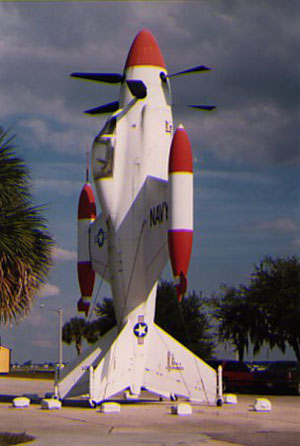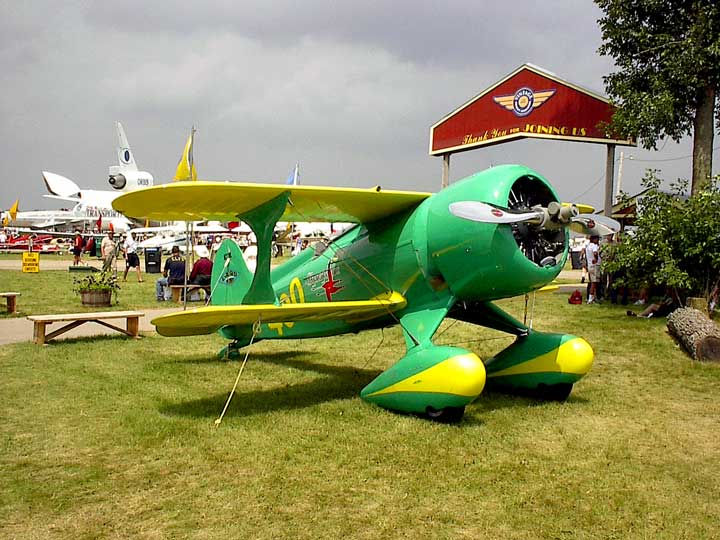De Westland Wyvern
The Westland W.34 Wyvern was a single-seat carrier-based attack aircraft of the 1950s intended to cover a wide variety of roles. Apart from the cannons, rockets, and bombs usually carried by such aircraft, the Wyvern was unusual in that it could also carry a torpedo. Another unusual feature was its contra-rotating propellers.
Development was plagued by engine problems. The initial prototypes used the Rolls-Royce Eagle 24-cylinder H-pattern engine (A replacement for the failed Vulture and no relation to the company's engine of the same name of World War I vintage). Specification N.11/44 that had led to the aircraft's development had called for an airframe design that would be suitable for turboprop power when this technology was available. In fact, suitable turboprops such as the Rolls-Royce Clyde and Armstrong Siddeley Python became available sooner than the Eagle was perfected, and the Python was used on the 90 production examples instead. Although the first prototype flew on December 12 1946, Wyverns would not enter service for six years.
Wyverns equipped Nos. 813, 827, 830, and 831 Squadrons of the Fleet Air Arm, with 830 Sqn flying them into combat from HMS Eagle during the Suez Crisis. All were withdrawn from service by 1958.
General characteristics
Crew: One
Length: 42 ft 3 in (12.88 m)
Wingspan: 44 ft 0 in (13.42 m)
Height: 15 ft 0 in (4.57 m)
Wing area: 355 ft² (33 m²)
Empty weight: 15,608 lb (7,095 kg)
Loaded weight: 21,200 lb (9,636 kg)
Max takeoff weight: 24,450 lb (11,113 kg)
Powerplant: 1× Armstrong Siddeley Python 3 turboprop, 3,667 hp (2,736 kW)
Performance
Maximum speed: 383 mph (613 km/h)
Range: 904 miles (1,446 km)
Service ceiling: 28,000 ft (8,537 m)
Rate of climb: 2,350 ft/min (11.9 m/s)
Wing loading: 60 lb/ft² (292 kg/m²)
Power/mass: 0.17 hp/lb (0.28 kW/kg)
Armament
4x 20 mm Hispano Mk. V cannons in the wings
16x underwing rockets or
Up to 3,000 lb (1,364 kg) of bombs or one torpedo or sea mine
En hierbij een nieuwe dan maar.









